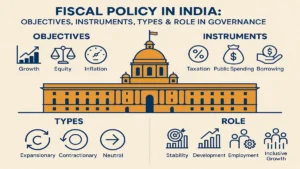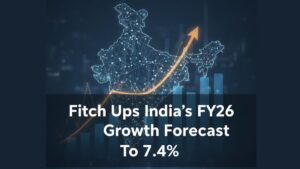India’s forex reserves experienced a notable increase, rising by $2.975 billion to reach $619.072 billion for the week ending February 23, as reported by the Reserve Bank of India (RBI). This surge follows a previous week where reserves had slightly decreased by $1.132 billion.
Major Components
1. Foreign Currency Assets:
- Increased by $2.405 billion to $548.188 billion.
- Foreign currency assets encompass various currencies such as the euro, pound, and yen, reflecting their valuation against the US dollar.
2. Gold Reserves:
- Rose by $472 million to $47.848 billion during the week.
3. Special Drawing Rights (SDRs):
- Witnessed an uptick of $89 million to $18.197 billion.
4. Reserve Position with the IMF:
- Expanded by $9 million to $4.839 billion.
Historical Perspective
India’s forex reserves achieved an all-time high of $645 billion in October 2021, marking a significant milestone in the country’s economic landscape.




 Fiscal Policy in India: Objectives, Inst...
Fiscal Policy in India: Objectives, Inst...
 Billionaire Wealth Transfer Enters Histo...
Billionaire Wealth Transfer Enters Histo...
 Fitch Ups India’s FY26 Growth Forecast t...
Fitch Ups India’s FY26 Growth Forecast t...







